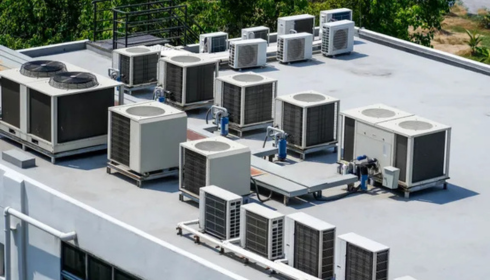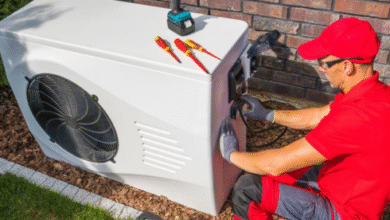Walk into almost any building—whether it’s a buzzing office tower, a shopping mall, or even your favorite restaurant—and you’ll likely take one thing for granted: the air. Not just whether it’s warm in the winter or cool in the summer, but how steady, breathable, and downright comfortable it feels. That invisible comfort is brought to you by HVAC systems, a technology that often hums quietly in the background while shaping how we live, work, and breathe.
What’s fascinating is that while most of us notice a flickering lightbulb or a cracked window immediately, we rarely think twice about the air conditioning unit above our heads until something goes wrong. Yet, HVAC isn’t just about comfort—it’s about efficiency, productivity, even safety.
The Pulse of Modern Business
If you’ve ever worked in an office that felt more like a sauna in July or a walk-in freezer in January, you know exactly how much environment impacts performance. Temperature and air quality influence not only physical comfort but also mental clarity. Businesses learned this a long time ago. That’s why they invest in commercial hvac services—specialized expertise that keeps large spaces functioning smoothly, often with tailored systems that can manage dozens of rooms and hundreds of people at once.
But HVAC isn’t only about comfort in these settings. For companies, downtime is costly. An overheated server room can wipe out data; a poorly ventilated factory floor can lead to safety risks. That’s why service contracts and proactive maintenance have become the rule rather than the exception. For many facilities managers, a trusted HVAC partner is as critical as an IT department.
The Rise of the Rooftop
If you’ve ever driven through a city and noticed boxy metallic structures dotting rooftops, you were probably looking at AC units. They may not win design awards, but their positioning is genius. Rooftop ac units are easier to install, easier to service, and they free up valuable interior space for businesses that would rather put square footage to better use.
The rooftop setup also means fewer disturbances. Technicians can access the system without wandering through office spaces, and noise pollution is reduced for those working below. Plus, these units are modular. Need more cooling capacity as your company expands? You can add another unit without overhauling the entire system. It’s a flexible solution in a world where businesses need to scale quickly.
Of course, rooftop units come with their quirks. Exposure to weather can wear them down faster if maintenance isn’t consistent. But when cared for properly, they’re among the most reliable workhorses of the HVAC world.
Industry and the Heavy Lifters
When we talk about HVAC in a home or office, we’re often thinking about comfort. But in manufacturing or heavy industry, it can be a matter of survival—literally for both equipment and workers. Think of chemical plants, automotive factories, or food processing facilities. These environments generate extreme heat, dust, or airborne chemicals. Without robust industrial hvac systems, not only would production slow, but conditions could quickly become hazardous.
Industrial systems are engineered differently from the ones in your local café. They’re larger, tougher, and often customized to handle unique demands—such as filtering out specific contaminants or balancing humidity levels critical to production. In some cases, precise air quality isn’t just nice to have; it’s required by law. For instance, pharmaceutical facilities must maintain cleanrooms with meticulously controlled environments.
What stands out in industrial contexts is the sheer scale of these systems. Imagine ducts wide enough to walk through, fans that could rival jet engines, and chillers the size of trucks. It’s infrastructure on another level, and yet it often goes unnoticed by the very people whose lives depend on it.
Energy and the Green Shift
Of course, we can’t talk about HVAC today without mentioning sustainability. Heating, cooling, and ventilation account for a massive share of global energy use. That’s why modern systems are increasingly judged not only on performance but also on efficiency.
From smart thermostats in small businesses to advanced building management systems in skyscrapers, the focus is shifting toward reducing waste. Rooftop units now often come with variable-speed drives that adjust output based on need, rather than running at full blast all the time. Industrial facilities are exploring heat recovery systems that recycle waste energy back into production.
This isn’t just good for the planet—it’s good for the bottom line. Utility costs can be one of the largest expenses for a company, and efficient HVAC can trim them dramatically. It’s the kind of win-win scenario that makes sustainability more than just a buzzword.
The Human Factor
Here’s something often overlooked: HVAC isn’t just machines and ducts. It’s people. Behind every comfortable building are technicians, engineers, and service teams who crawl through tight spaces, climb onto roofs in the middle of summer, and work odd hours to ensure systems keep running.
There’s an artistry in balancing airflow, an engineering challenge in maximizing efficiency, and a responsibility in keeping environments safe. These professionals are the unsung heroes who, quite literally, make air livable. Without them, offices would grind to a halt, industries would stall, and countless daily routines would feel a lot more unbearable.
Looking Ahead
Technology never stops evolving, and HVAC is no exception. We’re seeing systems that “learn” occupancy patterns, buildings that self-regulate with AI, and components designed to last longer with fewer resources. Drones are even being used for rooftop inspections, cutting down on risk for human technicians.
At the same time, global challenges like rising temperatures and urban density are pushing HVAC into the spotlight. Cities will need smarter cooling strategies, industries will need cleaner ventilation solutions, and businesses will need partners who can combine reliability with innovation.
Wrapping It Up
Next time you walk into a building and feel that instant wave of comfort, take a moment to appreciate the invisible network humming above, behind, or beneath you. HVAC isn’t glamorous, but it’s essential. From sleek offices relying on commercial hvac services, to city skylines dotted with rooftop ac units, to sprawling factories powered by industrial hvac systems, this technology quietly defines our modern world.
We rarely see it, but we always feel it. And maybe that’s the truest sign of its success—comfort so seamless you don’t even notice until it’s gone.





